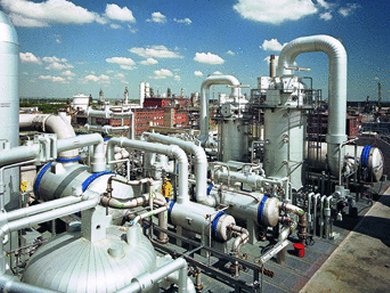On April 6, 1865, Friedrich Engelhorn founded the company “Badische Anilin- & Sodafabrik” in Mannheim, Germany, to produce the red dye aniline from the waste product coal tar. The dyes did not show sufficient color fastness, therefore, in 1868, the chemist Heinrich Caro was appointed the first research director. Andreas Kreimeyer, Research Executive Director, BASF, Ludwigshafen, Germany, and colleagues look at the highlights among the more than two million products and technologies BASF has since introduced into the market and describe where they see the future of BASF.
In 1869, Caro, Carl Graebe and Carl Liebermann, secured the patent for the industrial-scale production of the dye alizarine, René Bohn discovered indanthrene blue in 1901, a type of dye superior to all previously known artificial organic dyes owing to its outstanding color fastness. Discoveries of methylene blue and indigo followed.
In 1909 Fritz Haber, professor of chemistry in Karlsruhe, developed the first experimental synthesis of ammonia and in 1910, Alwin Mittasch, BASF identified a new catalyst for the process.
In the late 1920s, Walter Reppe developed four catalytic reactions of acetylene under pressure: vinylation, ethynylation, carbonylation, and cyclic polymerization. Today known as “Reppe chemistry”, they enabled the synthesis of numerous organic compounds and intermediates, such as vinyl ether, butanediol, or acrylic acid.
In a cooperation with AEG, BASF developed in 1932 tear-resistant homogeneously coated magnetic tapes for sound recording based on the carrier plastic cellulose acetate and carbonyl iron.

Today, BASF has more than 10,000 employees in research and development and collaborates with 600 partners from academia and industry in around 3000 projects and produces around 200,000 different products. Approximately E 1.4 billion per year is spend for R&D and around E400 million for the development of new areas, known as growth and technology fields.
Kreimeyer says: “The role of chemistry has expanded beyond the sale of large amounts of basic chemicals, intermediates, or plastics towards providing innovative solutions at the level of materials and systems. … Intelligent application of chemistry is the driver of innovation when there is a need to provide sustainable solutions that reconcile ecological, economic, and social demands.”
- “We Create Chemistry for a Sustainable Future”: Chemistry Creates Sustainable Solutions for a Growing World Population,
Andreas Kreimeyer, Peter Eckes, Christian Fischer, Harald Lauke, Peter Schuhmacher,
Angew. Chem. Int. Ed. 2015.
DOI: 10.1002/anie.201409941
BASF celebrates its 150th anniversary this year. As part of the celebrations, Angewandte Chemie publishes a special jubilee issue where this essay is included.
Other articles include
- Challenges of Artificial Photosynthesis,
ChemViews Mag. February 12, 2015.
Artificial photosynthesis is seen as the most promising method for sustainable fuel and chemical production
Also related to the anniversary
-
- Prototype of Magnetocaloric Wine Cooler,
Veronika Belusa,
ChemistryViews.org January 13, 2015.
Energy-efficient refrigeration systems operate with less noise and use water-based coolants instead of gaseous refrigerants - Magnetocaloric Refrigeration: Reinventing the Fridge?,
Ekkes Brück, Delft University of Technology, The Netherlands
ChemistryViews February 13, 2015.
Will magnetocaloric materials make refrigeration technology more efficient and sustainable?
- Prototype of Magnetocaloric Wine Cooler,
- More articles related to the 150th anniversary of BASF




